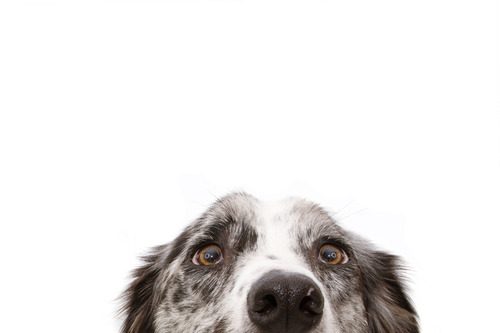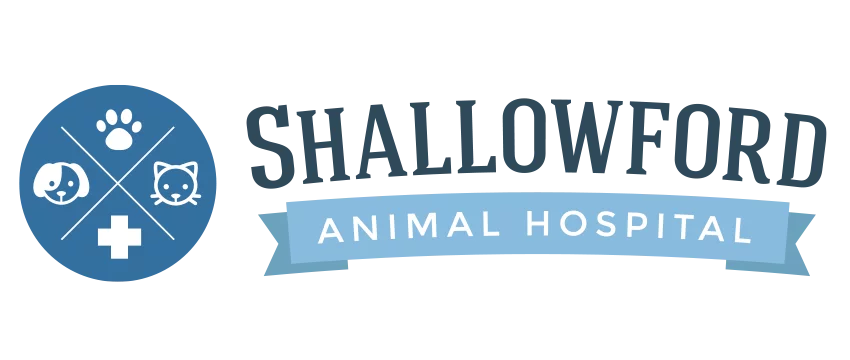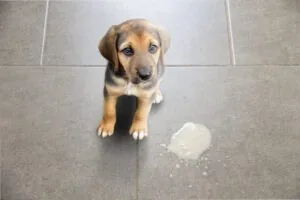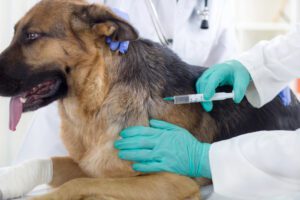Dog Histiocytoma – Signs, Causes, And Treatment
If you’ve noticed a small, round lump suddenly appear on your dog’s skin, you’re not alone in your concern. Many pet owners discover these growths during routine petting or grooming sessions and while the word “tumor” can sound alarming, not all growths are harmful. One such example is a dog histiocytoma. Though it may look worrisome, a histiocytoma is typically benign and treatable. In this blog, we’ll walk you through what a dog histiocytoma is, how to recognize it, and what steps your veterinary team might recommend next. If you’re in the Lewisville, NC area and have concerns about a growth on your dog’s skin, call Shallowford Animal Hospital at (336) 945-4412 or schedule an appointment online.

What Is a Dog Histiocytoma?
A dog histiocytoma is a benign skin tumor that originates from histiocytes, a type of immune cell found in the skin. These tumors are considered non-cancerous and are most often seen in younger dogs, although dogs of any age can develop them. Histiocytomas typically appear suddenly and grow rapidly, often prompting immediate concern from pet owners.
These growths are usually solitary, dome-shaped, and red or pink in color. They can be smooth or slightly ulcerated and are commonly found on the head, neck, ears, or limbs. While the word “tumor” can raise alarm bells, histiocytomas generally do not pose a long-term threat to your dog’s health. In most cases, they resolve on their own or can be treated easily with veterinary guidance. If you’re not sure whether a lump on your dog is a histiocytoma, it’s best to schedule a veterinary visit. Diagnosing the type of growth correctly is the first step toward peace of mind.
Common Signs of a Dog Histiocytoma
Because a dog histiocytoma often appears suddenly, it’s usually first noticed during petting, brushing, or bathing. While it may look like a more serious skin issue, there are some telltale signs that can help differentiate it from other growths.
Characteristics of Histiocytomas
- Rapid Onset: These tumors can appear almost overnight.
- Small and Round: They are often small (less than 2.5 cm), raised, and circular in shape.
- Smooth or Ulcerated Surface: Some may look shiny and smooth, while others can appear crusted or ulcerated.
- Pink or Red in Color: The color often makes them stand out from surrounding skin.
- Itchiness: Some dogs will scratch or lick at the area, especially if it becomes irritated.
- No Systemic Symptoms: Your dog typically won’t show signs of illness such as fever, loss of appetite, or lethargy.
While these features can help guide your observation, a physical exam and diagnostic testing are required for an accurate diagnosis.
What Causes a Dog Histiocytoma?
The exact cause of a dog histiocytoma is still unknown, but veterinarians believe these tumors are linked to an overgrowth of histiocytes, which are immune cells involved in protecting the body against infection. While histiocytomas are not contagious or triggered by poor hygiene, certain factors may contribute to their development.
Possible Risk Factors
- Age: Most commonly seen in dogs under 3 years old, though older dogs are not exempt.
- Breed Predisposition: Breeds such as Boxers, Dachshunds, Cocker Spaniels, and Labrador Retrievers appear to be more prone to developing histiocytomas.
- Immune Response: The tumor may result from an exaggerated immune response to a minor irritation or unknown trigger.
- Genetic Influence: Some research suggests a hereditary component, although it is not yet well understood.
While you can’t prevent a histiocytoma from developing, prompt attention and diagnosis can make management straightforward and stress-free.
How Is a Dog Histiocytoma Diagnosed?
Once you notice a new skin growth on your dog, your veterinarian will use a few diagnostic tools to confirm whether it’s a histiocytoma or something else. This process helps rule out other, more serious skin conditions or tumors.
Diagnostic Methods
- Physical Exam: Your veterinarian will begin by examining the size, shape, location, and surface of the mass.
- Fine Needle Aspiration (FNA): A common, minimally invasive procedure where cells from the lump are extracted using a thin needle and analyzed under a microscope.
- Biopsy: In rare or uncertain cases, a small tissue sample may be surgically removed for lab evaluation.
- Histopathology: The extracted cells or tissue can be sent to a pathology lab to confirm the tumor type.
Diagnosis is typically quick and straightforward, especially when using FNA, which can often be performed during a regular appointment. If your veterinarian confirms a histiocytoma, they’ll walk you through the next steps.
Potential Treatment Approaches for Dog Histiocytoma
Most dog histiocytomas resolve on their own within two to three months. However, treatment may be necessary depending on the tumor’s size, location, and whether it causes discomfort or becomes infected.
Observation
In many cases, the best course of action is simply to monitor the histiocytoma. This approach is especially appropriate when:
- The tumor isn’t bothering your dog
- It’s in a location that doesn’t interfere with movement or vision
- It shows signs of shrinking on its own
Your veterinarian may recommend periodic check-ups to ensure the mass is healing and not becoming infected.
Surgical Removal
If the histiocytoma is particularly large, irritated, or located in a problematic area (such as the eyelid or paw), surgical excision may be recommended. This option provides:
- Immediate resolution of the growth
- Tissue for histopathology to confirm the diagnosis
- Prevention of complications from scratching or secondary infection
Surgery is a safe and effective treatment, especially when performed under local or general anesthesia in a controlled veterinary setting.
Post-Treatment Care
Whether managed through observation or surgery, follow-up care may include:
- Monitoring the area for signs of regrowth or infection
- Using an Elizabethan collar to prevent licking or scratching
- Topical or oral medications if the area becomes irritated
Your veterinary team will provide tailored instructions based on your dog’s needs.
When to Schedule a Veterinary Visit
It can be tempting to wait and see what happens when you find a new lump, especially if your dog seems otherwise fine. However, early evaluation by your veterinarian is always the right move. Here’s when to make that call:
- The mass appears suddenly or changes quickly
- The tumor is bleeding, ulcerated, or infected
- Your dog is licking, scratching, or appears uncomfortable
- You notice additional lumps or changes in behavior
- You’re unsure what the mass could be
A quick veterinary check-up can offer peace of mind and prevent complications. If you’re located in or around Lewisville, NC, Shallowford Animal Hospital welcomes new and returning patients. Just call (336) 945-4412 to schedule a visit.
Why Prompt Diagnosis Matters for Any Skin Growth
While a dog histiocytoma is usually harmless, not every skin growth shares that distinction. Lumps and bumps can range from benign cysts to malignant tumors, and many require different levels of care. That’s why it’s important not to assume or wait too long to seek answers. Identifying a dog histiocytoma early gives you more control over the outcome. Whether the tumor resolves on its own or requires removal, working with a veterinary team helps protect your dog’s comfort and well-being. If you’ve spotted something new on your dog’s skin, call Shallowford Animal Hospital today at (336) 945-4412 or schedule an appointment online. Your pet’s care team is here to help.
Share This Post
Recent Posts
About Shallowford Animal Hospital
Shallowford Animal Hospital and The Pet Spa at Shallowford are dedicated to the exceptional, compassionate care your pet deserves. Pets hold a very special place in our families, and we treat yours like our own.



